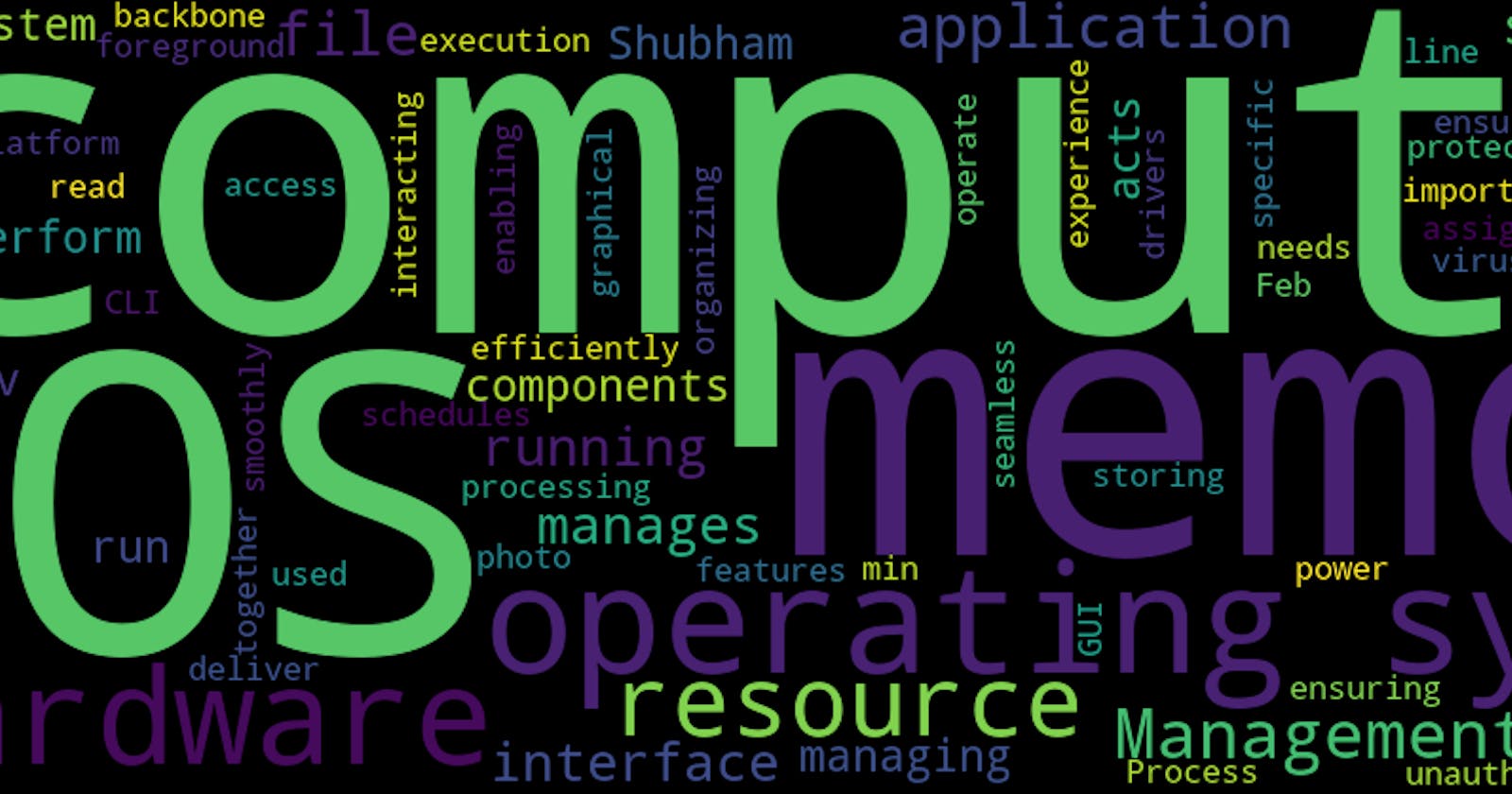An operating system (OS) is software that acts as an intermediary between a computer's hardware and its applications. It provides a platform for running applications and managing the resources of a computer, such as its memory, processing power, and input/output operations.
An operating system performs several important functions, including:
Resource Management: The OS manages the computer's hardware resources, such as the CPU, memory, and storage, and allocates them to running applications as needed.
Memory Management: The OS manages the computer's memory, ensuring that each running application has the memory it needs to operate and that memory is used efficiently.
Process Management: The OS manages the execution of processes, which are units of work that run in the background or foreground. The OS schedules processes, assigns resources to them, and ensures that they run smoothly.
File Management: The OS provides a file system for storing and retrieving files, as well as organizing and managing the files on a computer.
Security: The OS provides security features to protect the computer and its data from unauthorized access and viruses.
In order to accomplish these tasks, the operating system communicates with the computer's hardware through drivers, which are software components that interact with specific hardware components. The operating system also provides a user interface for interacting with the computer, such as a graphical user interface (GUI) or a command-line interface (CLI).
Overall, the operating system acts as the backbone of a computer system, enabling the hardware and software to work together to perform tasks and deliver a seamless user experience.
